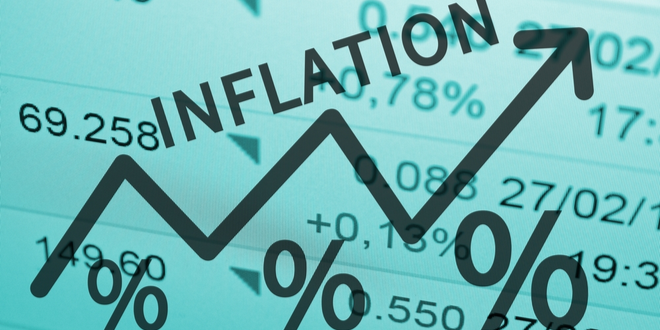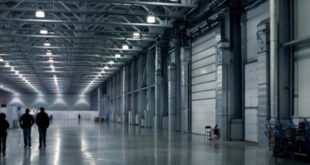That’s the view of Jay Prag, an economics professor at the Drucker School of Management at Claremont Graduate University. Prag spoke with iebusinessdaily.com last week about the state of the economy, why inflation has suddenly returned and why he believes it’s likely to be around for a while.
Q: There were some instances of prices going way up during the Great Recession, but inflation really hasn’t been an issue since the first Reagan Administration. Why has it suddenly become an issue?
A: There are several reasons why that happens, but the stimulus money that’s been pumped into the economy has had a lot to do with it. A lot of people like to blame the Democrats for everything, but in this case that would not be right, because this administration and the previous one are both responsible.
Q: Why were they responsible for unexpectedly driving up prices?
A: Because they did give people more money to spend, which is what they were supposed to do. In that sense, they worked. A recession is when people stop spending money, and the Trump Administration’s Paycheck Protection Program kept people working and Biden’s stimulus did give people more money to spend. But prices went up because people were spending so much.
Q: Isn’t that the classic definition of inflation?
A: Yes, it is. Prices go up when people spend more. I should say that this is the worst kind of inflation you can have, from a political point of view. By that I mean it’s the kind that no one sees coming. You go to the store one day and the price of everything seems to have gone up. That delivers a real blow to the economy.
Q: But the Trump Administration’s Paycheck Protection Program and the Biden stimulus were put in place to help people and businesses get through the pandemic, which is an extraordinary situation. Could it not be argued that some inflation is a reasonable price to pay to keep the economy afloat until things get back to normal? Particularly because whatever inflation occurs will be temporary?
A: Of course that’s a legitimate argument. This is not a regular slowdown, and things would have been worse if no stimulus had been done. It’s interesting. I lectured on this not too long ago, and not one person brought up that point, that may be a stimulus was something that had to the done.
Q: The Senate has passed President Biden’s $1 billion infrastructure bill, which makes it virtually certain that it will become law. Besides rebuilding the nation’s roads and bridges, the bill will put people to work and pump money into the economy, but some fear it will add to our inflation problems. Do you share that view?
A: No, I don’t. It’s a lot of money, but it’s going to be spent over 20 to 30 years. I don’t worry about that being inflationary.
Q: How do you think the national economy will perform between now and the end of the year?
A: I think unemployment will stay right around five percent, not much more than that, I don’t expect it to go lower than that. By the end of the year, I think it will be up to about six percent. I think the inflation we’re seeing now will be around for a while. I really believe six percent is baked in at this point.
Q: What do you base that on?
A: Because inflation feeds on itself. When people go out and spend at Christmas, prices go up. If people save their money and then go out and spend, the same thing. In this case, there’s a lot of stimulus money out there, and people are going to spend it. I think it’s going to take about two years, at least, to get all the extra money out of the system.
Q: Assuming you’re correct and inflation remains a problem for a while, how will that impact the Inland Empire?
A: The biggest impact would be in logistics. If people stop buying things and the logistics industry were to slow down, that could be a problem. We’ll find out more at Christmas, but it’s too early to predict how that might turn out. Housing could also be hurt.
Q: Is there anyone, or any sector, helped by inflation?
A: Only people who borrow money at a low-interest rate. But inflation affects everyone, and it doesn’t do anything to help the economy.
Q: The U.S. Labor Department released the July consumer price index Wednesday. Prices were up 5.4 percent year-over-year, while core inflation – a number that excludes food and energy prices – rose 0.03 percent. Were you surprised by those numbers?
A: No. It was half a percent up from the previous month, which is actually a lot. But that was in line with everyone’s expectations. It’s not getting better, but it’s not getting worse, either. Inflation is up to four percent so far this year, and we’re still on pace to hit six percent by the end of this year.”
Q: You talk a lot about micro solutions versus macro solutions. What is the difference and how do you know which one to use?
A: It depends on the problem. If the problem is caused by a shock to the system, a one-time event that doesn’t last very long, then I’m OK with a micro solution. A stimulus is a micro solution, and that’s fine for a short-term fix. But I think what we have here is actually something more long-term. The economy is trying to get to the other side of COVID-19, and it will, but we have to see how much it’s changed the economy. Macro solutions, like retraining people and repositioning jobs, take a lot longer, and they’re a lot harder to make work.
Q: Would you say you’re more optimistic, or more pessimistic, than your fellow economists?
A: I’m not so much optimistic or pessimistic as I am realistic about the situation we’re in. When all of this started, in early 2020, there were economists who thought we would be out of this in a year, or sooner. I thought it was more serious than that, and I think I was right.
Q: Inflation was one of the things that drove President Carter from office in 1980, but it’s been mostly a non-issue since then. Why is that?
A: It’s mostly because the Federal Reserve has been focused a great deal on keeping inflation out of the economy. Inflation is mostly about money, and for most of the last 40 years, the FED has concentrated on keeping the money supply low.
Q: This month’s purchasing manager index by Cal State San Bernardino has a list of manufacturing-related items that are going up in price. More than 20 items are named, including aluminum, wood, acrylic, paper, steel, rubber, and electronic components. Does that surprise you?
A: Not at all. Inflation takes a long time to work its way through the system, and there are two kinds of prices, input prices, and consumer goods prices. Input prices are manufacturing products, which is what’s on the PMI list, and they take longer to go up. But you could see it coming.
Q: Do you think the Federal Reserve will raise interest rates between now and the end of the year?
A: They’ve already said they won’t raise interest rates this year, but I think they should, by about a quarter of a point. If you raise interest rates, it sends a signal that they’re reducing the money supply, and a reduced money supply means not as much inflation. But it doesn’t look like that’s going to happen.”
 IE Business Daily Business news for the Inland Empire.
IE Business Daily Business news for the Inland Empire.


